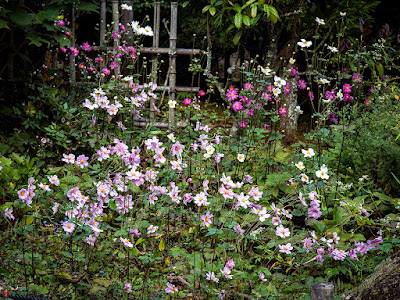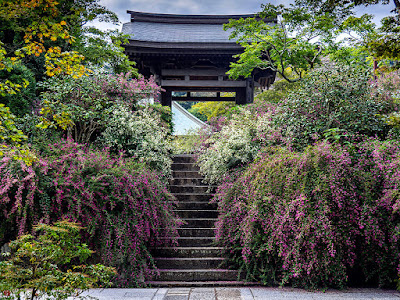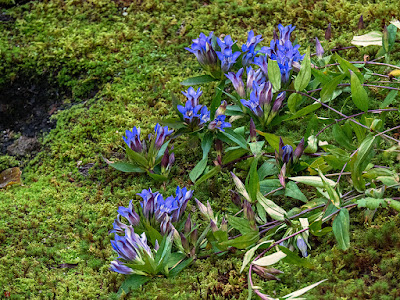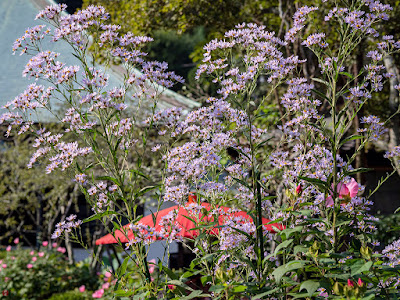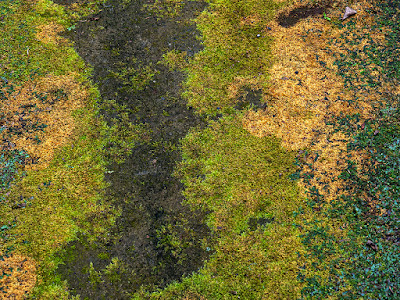The countless small flowers of Kinmokusei (sweet olive) are in full bloom to notify the fast deepening of autumn and are announcing their gorgeous blooming by diffusing their sweet fragrance in this tranquil garden which will soon be adorned with colored autumn leaves.
In the humble "Sho-kannon-do" temple below the cloud of golden yellow flowers, the small wooden statue of the Sho-kannon (Holy Avalokiteshvara) is silently standing, while tenderheartedly staring at the ceaseless and swift transition of the seasons and all living things before his eyes.






